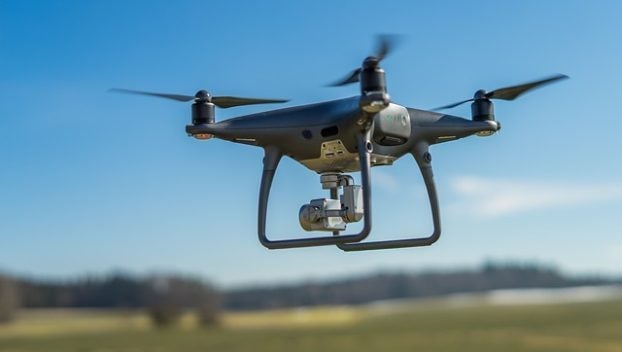Eye in the sky: Drones help Prince Edward students check weather
Published 6:54 am Wednesday, September 6, 2023
|
Getting your Trinity Audio player ready...
|
FARMVILLE – What’s that in the sky? It’s not a bird, it’s not a plane, it’s a … group of drones flown by Prince Edward students.
In the Prince Edward school district, K-12 students now have the opportunity to take their knowledge from the classroom and apply it through real-world, hands-on experience. The drones allow them to study weather patterns and other aspects of the environment from a point of view that textbooks cannot offer.
How does this work?
The district’s STEM (Science, Technology, Engineering and Math) Instructional Specialist, Melodia Pyne, explained the dynamics of how the students observe and learn from the drones.
“Since our drones are not equipped with sensors such as thermometers or ones that measure humidity, our students are required to study the different types of weather patterns and phenomenon before flying the drones,” Pyne said. “When flying the drones they then observe different types of clouds, position of the sun, basic elements of the current weather.”
Students also detect effects of weather on the environment, such as erosion, and look for evidence of season patterns, such as observing the leaves on the tops of trees. Further, teachers are planning to use the drones to showcase watersheds to their students.
This unique perspective allows students to connect what they learn in school to what’s actively happening in the world around them.
“Sometimes just looking at pictures is not enough, so a different viewpoint or perspective makes the concepts real and tangible for our students,” Pyne said.
Connecting with Prince Edward students
Despite studies showing that as children get older their engagement and interest in learning school materials decreases, students in Prince Edward and surrounding counties are enamored with this hands-on learning activity.
“Students are excited and continue to ask when I will be back to their class,” Pyne said.
Pyne also noted a significant number of female students showing interest in flying the drones, an encouraging fact considering women make up one-third of STEM occupations in the workforce.
How does this impact students?
By moving students out of the classroom and letting them guide the reins of their own education, it opens new doors and lights new pathways to their capabilities, to all they can accomplish and to all the world has to offer them.
“I believe that exposure to advancing technology is important in preparing our students for tomorrow’s world,” Pyne said. “Sometimes leaders emerge and sometimes students surprise themselves by being awesome at something they otherwise would not have even tried.”
Educational opportunities such as these also highlight the critical role STEM plays in the world and day-to-day life.
“Many global challenges, such as climate change and healthcare issues, require STEM-based solutions. Students engaged in STEM activities are better positioned to contribute to solving these challenges in the future,” Pyne said.
The kids of today are the leaders of our future, Pyne added. The ones who will establish their own legacies built from the knowledge of those who came before them.
And they’re starting this legacy with a drone.






